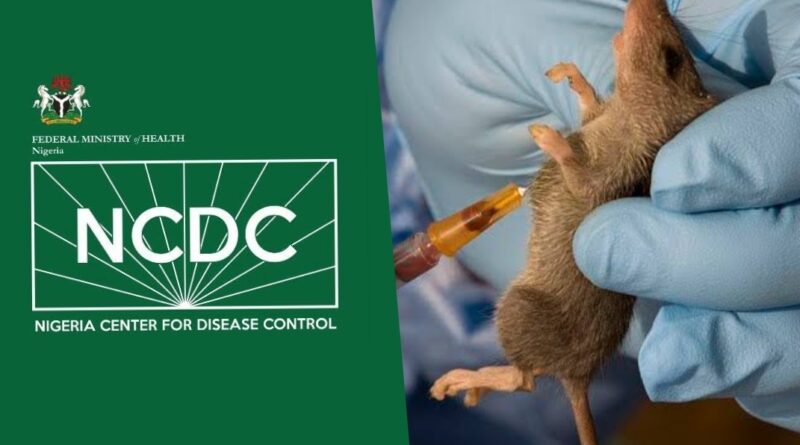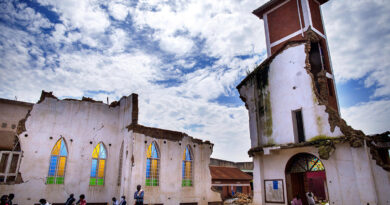Lassa Fever Outbreak: 822 Cases, 155 Deaths in Nigeria
Nigeria Reports 822 Lassa Fever Cases, 155 Deaths Amid Growing Health Emergencies
LAGOS – Nigeria is currently grappling with a worsening public health crisis as the Nigeria Centre for Disease Control and Prevention (NCDC) confirms 822 cases of Lassa fever and 155 deaths recorded in 2025, signaling an urgent call for coordinated national response and public awareness.
In its most recent situation report released on Tuesday, the NCDC disclosed 11 new confirmed cases during Epidemiological Week 29 (July 14–20), all reported from Ondo and Edo states, wo long-standing hot-spots in the country’s battle with Lassa fever.
This brings the total number of confirmed infections to 822 this year alone, reflecting both the persistence and severity of the outbreak, particularly in vulnerable regions.
Fatality Rate on the Rise
The case fatality rate (CFR) has surged to 18.9%, up from 17.1% recorded during the same period in 2024. This sharp increase suggests that the lethality of the virus may be intensifying, raising concerns among public health experts that improved treatment protocols and timely interventions are not yet adequately curbing mortality.
What’s particularly alarming is that this rise in fatality comes despite no significant jump in confirmed cases over the past two weeks, highlighting that it’s not just about how many are infected, but how deadly the virus has become.
Five States Bear the Brunt
The outbreak remains highly concentrated, with 89% of all confirmed cases reported from just five states:
- Ondo State – 32%
- Bauchi State – 23%
- Edo State – 17%
- Taraba State – 14%
- Ebonyi State – 3%
The remaining 11% of cases are scattered across 16 other states, bringing the total number of affected states to 21, and cases have been recorded across 105 local government areas (LGAs).
This widespread but uneven distribution demonstrates the disease’s geographic unpredictability, while reinforcing the need for state-specific strategies and localized interventions.
A Disease Targeting the Nation’s Workforce
NCDC reports show that the most affected demographic are young adults, particularly those aged 21 to 30 years. The median age of infection stands at 30, and the male-to-female ratio is approximately 1:0.8.
This pattern is troubling because it disproportionately impacts Nigeria’s economically active population—the segment that drives productivity, supports households, and sustains local economies. The health and well-being of this age group are crucial to national development, meaning the outbreak could have ripple effects on labor availability and economic stability.
Healthcare Workers: A Break in Transmission
In some encouraging news, the NCDC confirmed that no new infections among healthcare workers were recorded in the most recent week—an improvement from earlier phases of the outbreak, when frontline health professionals were particularly vulnerable.
This development may reflect the effectiveness of infection prevention and control (IPC) protocols, the use of personal protective equipment (PPE), and improved training for healthcare staff in outbreak regions.
However, the high overall CFR remains a sobering reminder that even with better protocols, early diagnosis and timely treatment are essential to saving lives.
National Response Strategy: Progress and Gaps
The National Lassa Fever Multi-Partner, Multi-Sectoral Technical Working Group (TWG) continues to spearhead Nigeria’s response. Efforts are focused on:
- Enhancing surveillance and case tracking
- Expanding diagnostic laboratory capacity
- Strengthening case management at treatment centers
- Deploying rapid response teams to hotspots
- Coordinating risk communication and public education
Despite these efforts, challenges persist. Many affected communities still face limited access to healthcare, low awareness, and delayed reporting, which hamper early detection and containment.
The clustering of cases in a handful of states also underscores the urgent need for intensified local outreach, environmental sanitation, and community-led public health campaigns, especially in high-burden LGAs.
Understanding Lassa Fever
Lassa fever is an acute viral hemorrhagic illness caused by the Lassa virus, typically spread through contact with food or household items contaminated with rodent urine or feces, or direct person-to-person transmission in healthcare settings.
Read Also: Tragedy as Guest Dies After Sudden Collapse at Niger Government House Lodge
Endemic in parts of West Africa, Lassa fever poses a recurrent seasonal threat, particularly during the dry season, and is often difficult to diagnose early due to its nonspecific symptoms, which resemble those of malaria or typhoid fever.
With no widely available vaccine, the disease remains a serious public health challenge, especially in rural communities with poor sanitation and limited healthcare infrastructure.
Call to Action: Urgency on All Fronts
The current situation demands urgent, coordinated action across all levels of government and the health sector. With the case fatality rate climbing, the outbreak now threatens to spiral if containment measures are not scaled up and sustained.
Key steps moving forward should include:
- Intensive public health education, especially in rural and high-risk areas
- Prompt case detection and isolation
- Massive cleanup and rodent control drives
- Continued protection for healthcare workers
- Cross-state collaboration for resource sharing and logistics
The NCDC and partner organizations are working against the clock, but the success of the national response depends on grassroots support, behavioral change, and rapid government intervention.
A Nation at a Crossroads
As Nigeria confronts yet another challenging year of disease outbreaks, the Lassa fever epidemic serves as a critical test of the country’s health resilience, preparedness, and capacity to protect its people—especially those at the heart of its future.
The coming weeks will be pivotal. Whether this crisis worsens or begins to recede depends not just on policy, but on collective action from all corners of society.
Content Credit | Olaoluwa Ayomide
Image Credit | independent.ng




